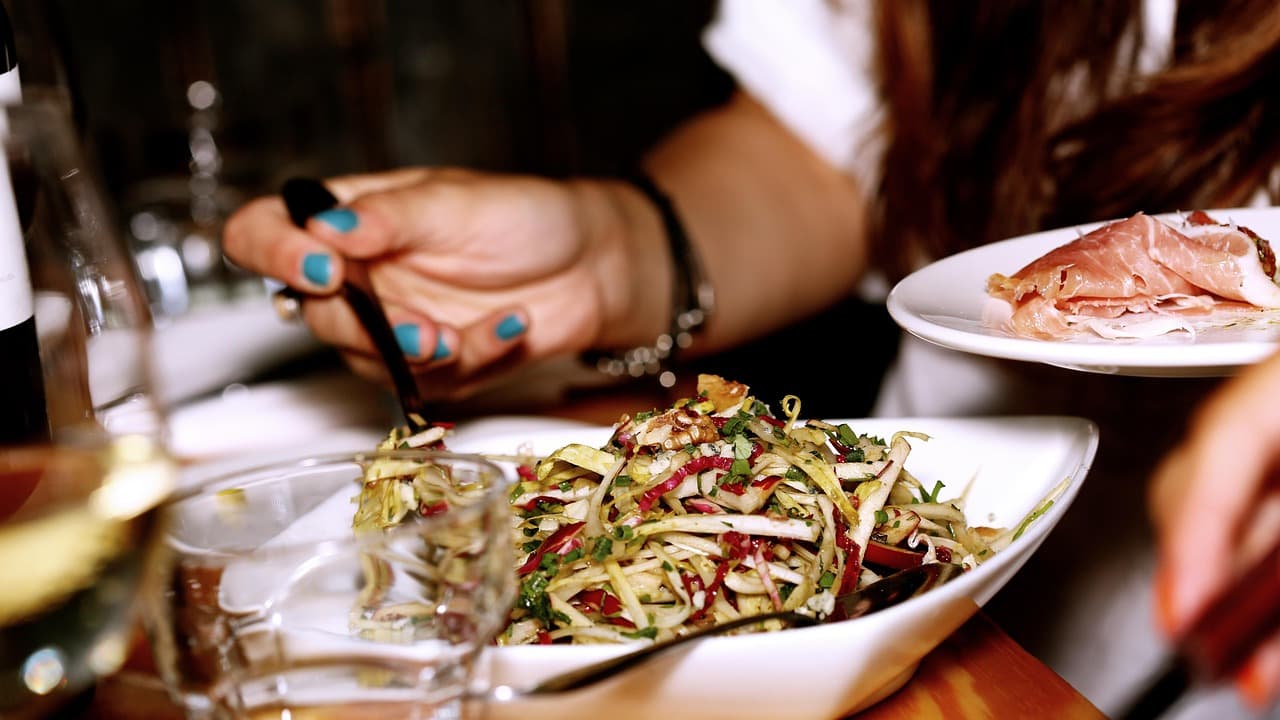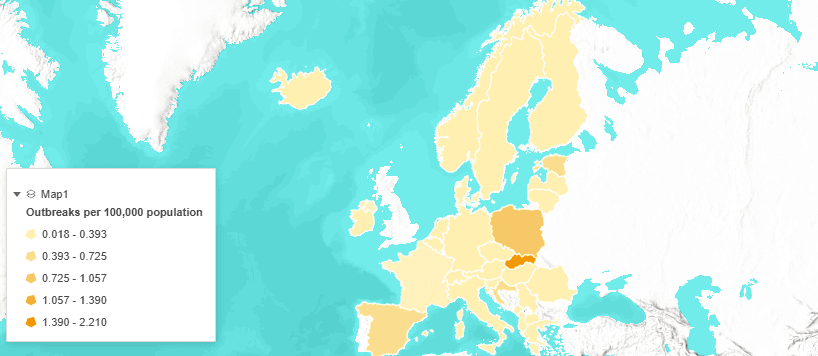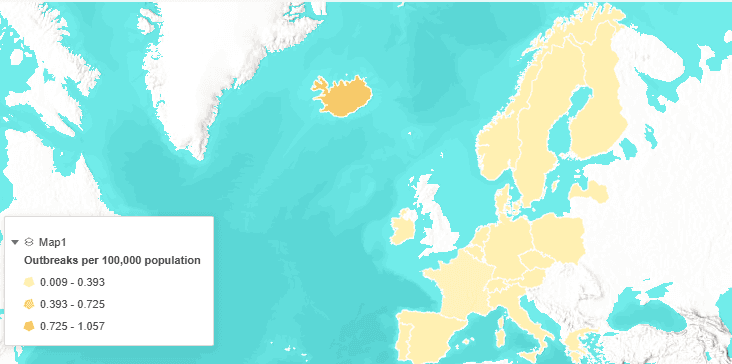From pasta to parasites: food poisoning on your plate in Europe
This summer, we are diving into figures about European destinations. This week: food poisoning.
Published on August 12, 2025

Our DATA+ expert, Elcke Vels, explores AI, cyber security, and Dutch innovation. Her "What if..." column imagines bold scenarios beyond the norm.
Everybody hates it: you arrive at your vacation destination, enjoy a delicious meal, and then... food poisoning. In Europe, around 23 million people fall ill every year from eating contaminated food. But which pathogens are the biggest culprits? And in which countries should you be extra careful? We take a closer look at Europe.
One bite can ruin your vacation. Bacteria, viruses, parasites: they can be hidden in your meal. The European Food Safety Authority has extensive statistics on which pathogens are common in Europe. The biggest culprit? Salmonella tops the list with over 9,400 infections per 100,000 inhabitants per year, followed by Norovirus with 8,491 cases. In third place is Bacillus cereus, accounting for 4,680 reports. Contaminated meat and polluted water are generally important sources of disease transmission.
Unfortunately, the cause of a food outbreak often remains unknown. This is because it is not always clear which food product was contaminated. Nevertheless, it is useful to know where the culprits occur in Europe.

Overview of how often a type of pathogen occurs in a European country. Credits: European Food Safety Authority (EFSA)
Salmonella
First, let's take a closer look at Salmonella. This is a bacterium that you often contract from raw chicken or pork, or eggs. Just one contaminated piece of food can make you very ill. It causes symptoms such as diarrhea, abdominal pain, fever, and nausea. It usually goes away on its own, but in young children, the elderly, or people with low immunity, it can be more serious. In rare cases, it can even lead to blood poisoning and death.
Salmonella is particularly prevalent in Slovakia. The reason for this is unknown. Likely, less stringent food quality monitoring, combined with increasingly warmer summers play a role.
But caution is also advised in countries such as Spain and Poland. In Spain, food poisoning has been on the rise in recent years. The year 2023 saw a significant increase in foodborne infections, with the number of deaths tripling compared to the annual average of the previous five years: 13 cases.
In addition to hygiene measures, modern techniques are also being used to combat Salmonella. For example, UV-C light can inactivate salmonella bacteria in drinking water, swimming pools, jacuzzis, and water used in food preparation. In the Netherlands, for example, UV-C was used in an indoor swimming pool to prevent contamination.

Overview of the number of outbreaks of Salmonella per European country. Credits: European Food Safety Authority (EFSA)
Norovirus
The Norovirus is extremely contagious and causes stomach flu. Every year, around 4.5 million Dutch people are affected, with approximately 500,000 cases attributable to the Norovirus. Symptoms can include vomiting, diarrhea, nausea, fever, headache, and abdominal pain. In general, a norovirus infection is not dangerous.
The virus is found in the feces and vomit of infected people and spreads easily through contaminated food or water. Raw shellfish, such as oysters, and unwashed vegetables or fruit can be particularly risky if they have come into contact with contaminated water. It is therefore important to cook food thoroughly, wash it well, and wash your hands regularly.
The virus is relatively common in Iceland. Due to the living conditions on board, Norovirus is also notorious for outbreaks on cruise ships. A few years ago, more than a hundred passengers on the cruise ship Viking Neptune became infected. The virus is believed to have originated from a restaurant in Iceland where a group of travelers had eaten. Such outbreaks are common. The record year was 2006, with 32 infected ships worldwide.
Technology can play a role in detecting the Norovirus. For example, researchers have developed a simple method for detecting infection with the virus using a smartphone. This method uses a paper test strip and fluorescent beads linked to antibodies against the virus. If the virus is present in a water sample, the beads clump together. These clumps are too small to be seen with the naked eye, but they are visible through a special microscope lens that is placed on a smartphone. The user then takes a photo of the result. The accompanying app automatically analyzes this image and counts the number of glowing dots—and thus the number of virus particles.

Overview of the number of outbreaks of the Norovirus per European country. Credits: European Food Safety Authority (EFSA)
Bacillus cereus
n third place is a bacterium: Bacillus cereus. You should be careful with protein-rich foods, vegetables, sauces, and puddings. Contamination is also relatively common in buffet restaurants. It is found in food that has been stored for too long and not cold enough. In the intestines, this bacterium produces a toxin that often causes food poisoning. The symptoms are usually mild and disappear fairly quickly.
Bacillus cereus is found throughout Europe, but the map shows that it is mainly found in France.
Special tests are available for food producers to detect bacteria such as Bacillus cereus quickly and reliably. The Neogen Petrifilm Bacillus cereus Count Plate is an innovative test kit in which a sample of the product is applied directly to a special plate. This plate contains a selective medium that allows only Bacillus bacteria to grow, making them easily recognizable as distinct colonies. The test provides results within a few hours.

Overview of the number of outbreaks of Bacillus cereus per European country. Credits: European Food Safety Authority (EFSA)
